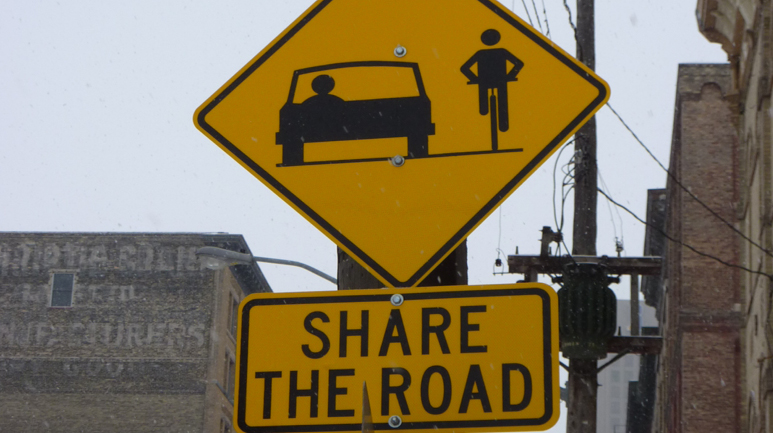The recent Winnipeg Free Press article “Walking and cycling can be deadly: As more of us hike and bike, will death toll rise?” caught my attention and got my mind racing. This story, in my opinion, does not present walking and cycling in a positive light and judging by responses online, many Winnipeggers share my view.
The original article, written by Jen Skerritt, took the view that increased numbers of pedestrians and cyclists are an important cause of accidents and deaths in the city. Cycling advocates like Anders Swanson cite insufficient investment in active transportation infrastructure as a factor responsible for the high number of accidents involving cyclists or pedestrians. While Skerritt points to significant investments in active transportation by the City of Winnipeg in its budget over the past two years, Swanson counters, ‘it’s a good starting point, but there’s still a long way to go’.
The real issue behind the current road conflicts among motorists, cyclists and pedestrians is a deficiency of proper infrastructure and education. Our street design is currently flawed making active transportation difficult. There is too much distance between intersections and crosswalks, which promotes jaywalking. Skerritt touches on Winnipeg’s infrastructure shortcomings but fails to consider the fact that educating drivers, cyclists and pedestrians can contribute greatly to safer roads in the city. Currently, the driver training program lacks any real content on pedestrians and cyclists. The recent training handbook has only two page devoted to teaching drivers about cyclists and the on-road driving practice does not really address this at all. Therefore, blaming the victim- the person who was hit in a collision, is unfair. Without proper education, none of the parties are entirely sure about how to share our roads.
Speed is also a major contributor to the number of deadly collisions that occur. I have often seen drivers going well over the recommended speed of 50 km/h down residential streets in the city. If infrastructure were in place to lower speeds or speed limits were simply reduced, when accidents do happen between a driver and a cyclist or pedestrian, it wouldn’t be as devastating. Our Mayor Sam Katz has even agreed with this notion by trying to lower speeds around school zones to 30km/h from 50km/h to make our streets safer for our youth as well.
Lastly, if Winnipeg wants to reduce the number of traffic deaths and injuries, we need to see more cyclists and pedestrians in the city. Yes, you read right. Studies show that with more cyclists on the road, drivers take notice of their presence and slow down, are more attentive, pass cautiously and learn how to share the road properly. This allows for safer roads overall. If we rid the streets of people who bike, walk and take the bus, this means more motorists are on the roads, more traffic congestion and more crashes. Winnipeg may have a long way to go to make roads suitable for cars, bikes and pedestrians, but if we all work together towards the same goal, it is achievable.
Green Action Centre has other great articles and blogs on active transportation you might like to read:
Want to travel actively but need some inspiration? Read our “Local Commuter Stories”
Think you can’t live car-free in Winnipeg? We’ve busted this myth and show you that you can!
Need some tips to tune-up your bike? Read about them here




Another pedestrian vehicle collision today: http://www.winnipegfreepress.com/local/breakingnews/St-James-crash-slows-Portage-Avenue-traffic-129523358.html
Looking at the photo, it seems this accident occurred at an intersection where it there is no light. Winnipeg needs to do a better job look at where people need to cross and providing them with safe alternatives to do so.
Hope you like my new made in Wpg youtube music video about distracted driving – Won’t start Texting http://youtu.be/XBVb49svhpo
Thanks for posting this much needed response! In addition to the lack of education, there is also a distortion of the facts surrounding transportation safety. Transport Canada research (and many other studies) have found that in terms of traffic safety “using public transit, cycling and walking tends to be safer overall” compared with vehicle use: http://www.tc.gc.ca/eng/programs/environment-utsp-publichealth-995.htm